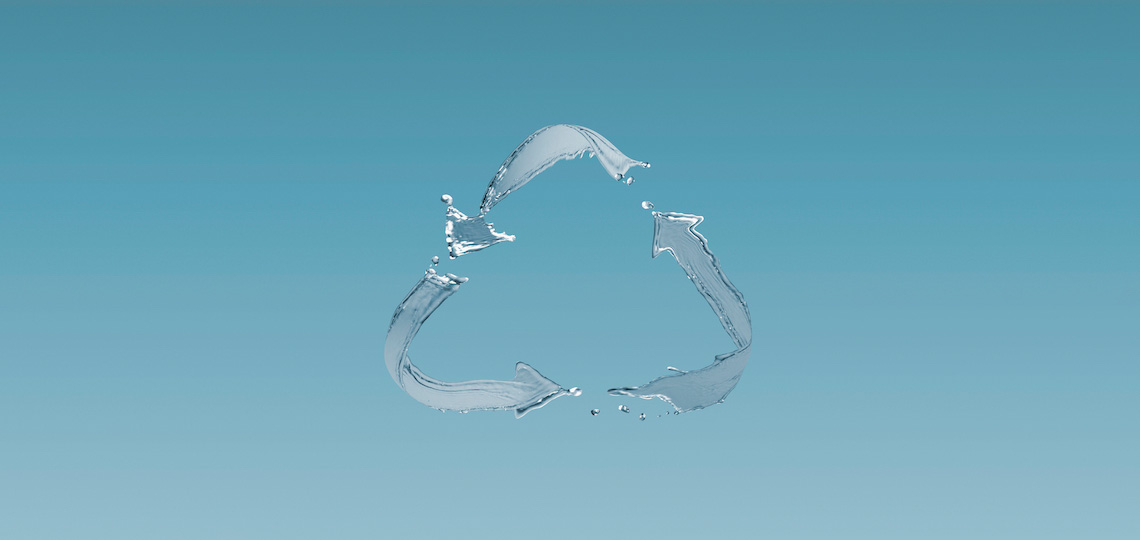Take an ‘always on’ approach to purified recycled water

While supplementing water supplies with recycled water during drought is an intermittent response, one leading expert says taking a permanent integrated water management approach to the use of purified recycled water could significantly bolster inland water security.
Presenting at the upcoming Ozwater’22 on the potential of taking an ‘always on’ approach to purified recycled water for inland communities, Aurecon Urban Water Resilience Market Lead Darren Romain said the concept presents a feasible approach to mitigating impacts of drought.
“Using a technology solution that does not include reverse osmosis provides an opportunity to implement purified recycled water as part of an integrated water management solution operating continuously, even out of drought,” he said.
In order to do this, alternative technologies to the conventional reverse osmosis need to be considered, but the process is already being implemented in the US and South Africa and is being advocated as a preferred technology approach in a lot of inland areas, Romain said.
“The technology utilises ozone, biologically-active carbon filtration and carbon absorption, UV, oxidation and chlorine,” he explained.
“The approach uses several well-established processes, although the combination hasn't been typically used in Australia. But it treats water to the standard required by both the Australian Guidelines for Water Recycling and the Australian Drinking Water Guidelines.”
Alternative benefits
Romain said this alternative to reverse osmosis has a lower carbon footprint and a lower operating cost, and does not produce a waste stream.
“The primary difference is that the alternative approach is more sustainable, it has a lower carbon footprint, and it requires less operating costs,” he said.
“Another big difference is the alternative treatment process removes contaminants from the process, whereas the reverse osmosis separates contaminants and concentrates them, which produces a waste stream that needs to be dealt with.”
While utilising reverse osmosis removes salt, high salinity levels in purified recycled water can be mitigated by taking a sustainable integrated water management approach, Romain said.
“If you have a closed loop system where you're returning recycled water back to the drinking water system, it can increase your total salt level. This can be problematic for drinking water, but also for irrigation water, as it can result in salt toxicity in soils over time and impact plants,” he said.
“But if we manage the water in an integrated water supply approach, where you blend less of it into the drinking water system over a longer period of time, it reduces the overall ratio to a level that is unproblematic.”
Continuing the conversation
While the benefits of utilising this approach are impressive, Romain said the biggest challenge in adoption is community and government acceptance.
“The biggest barrier, which is well understood within the industry, is that community acceptance and, by proxy, government acceptance of purified recycled water is a challenge,” he said.
“We’re not advocating that we all jump head-first into a different infrastructure solution, but it should be something we look at and start the conversation with our communities where it makes sense to do so. We should be looking at all options for inland drought resilience.”
Romain said another challenge is industry capacity.
“Once you get beyond government and community acceptance, there's an industry capacity issue to deal with. These are more advanced treatment processes, and the capability and capacity to maintain and operate these systems isn't necessarily available,” he said.
Despite these challenges, Romain said starting the conversation around this potential approach is an important step as we work towards ensuring water security for inland communities.
“It’s an opportunity to think about the issue of water security in a slightly different way. It’s about thinking about resilience in an integrated water management way, instead of the drought response way,” he said.
“But it’s also about getting a conversation going, to actually consider this as a feasible option.”
Interested in hearing more about integrated water management and drought resilience? Register for Ozwater’22 here.


